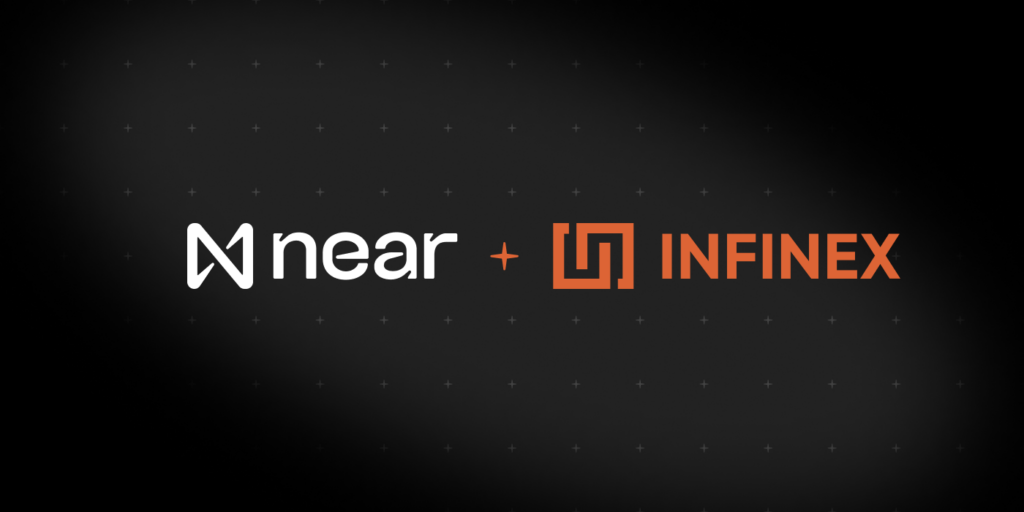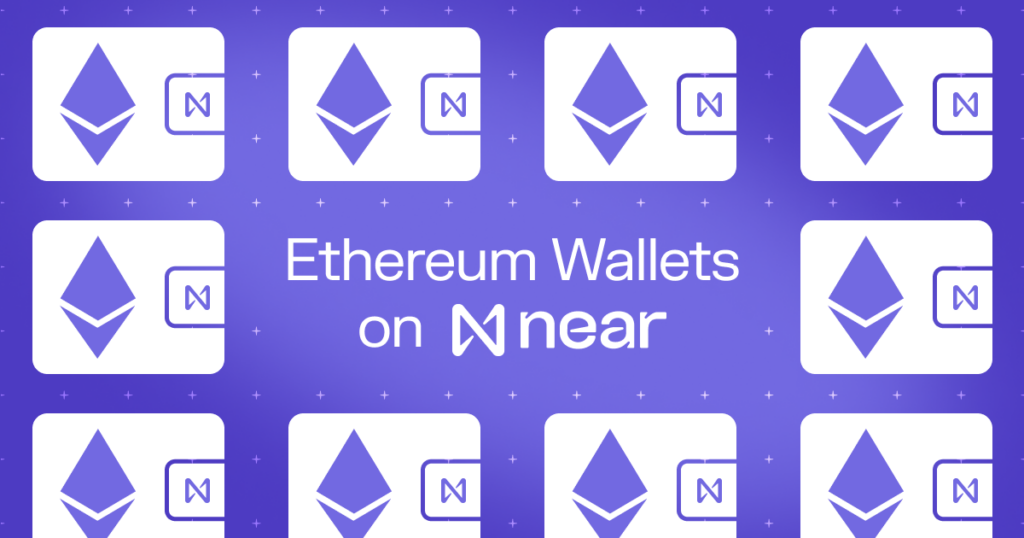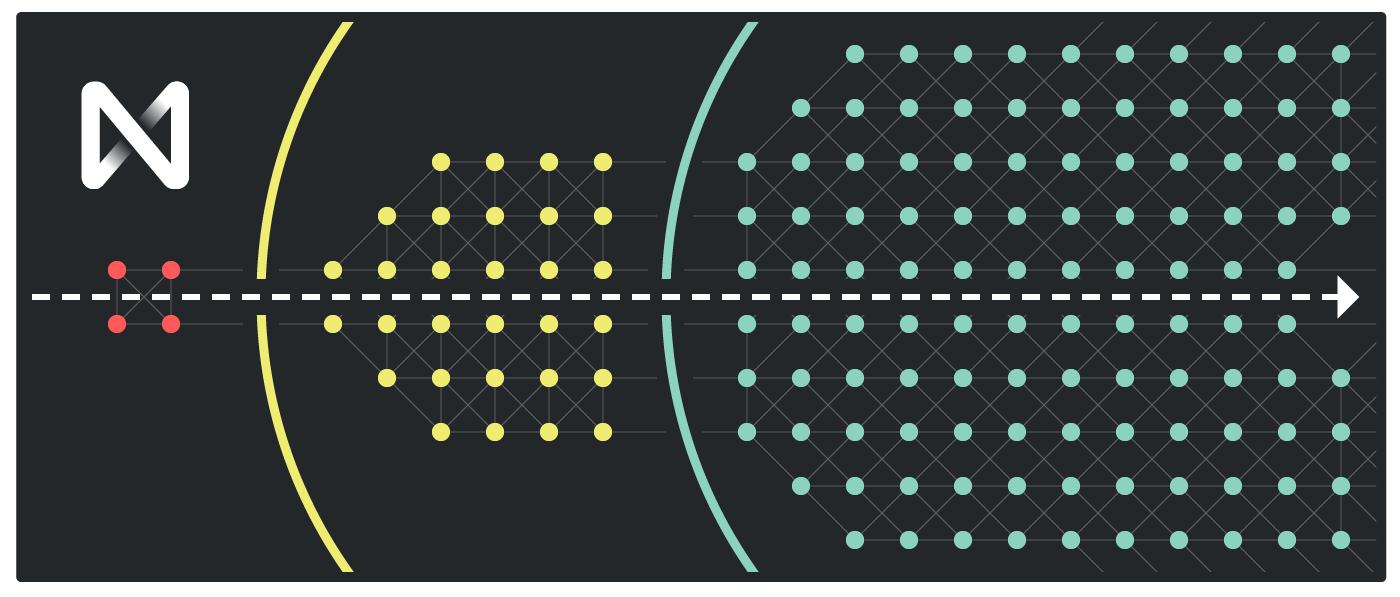Transitioning NEAR MainNet to the Next Phase: It is Time to Stake, Delegate and Vote
As announced in April by this roadmap blog post, NEAR is entering into Phase I, called “MainNet Restricted.” This transition will be complete on September 24th.
Since August, a decentralized set of validators has been onboarding to MainNet to replace the NEAR Foundation nodes, thus decentralizing the protocol’s consensus. The NEAR Validators Advisory Board represents the core group of community members, distinguished validators from the Stake Wars incentivized testnet program and recognized players from the Proof of Stake ecosystem.
In the meantime, the ecosystem is already thriving on the current configuration of the network, called “MainNet PoA”, with examples that include the custody provider Finoa and applications like Zed.run and Flux. For them, this transition will proceed without interruptions: the four NEAR Foundation nodes are working as any other validator, and the Phase I network will simply reach a higher number of block producers.
The upgrade to a decentralized, validator-run Phase I will kick off a new wave of opportunities like the Rainbow Bridge, the upcoming EVM support, and several as-yet-unannounced applications.
This activity lays down the groundwork for Phase II, a full community governed MainNet, as validators can also start voting to enable transfers and protocol’s inflationary rewards. The decision will be entirely in their hands, and this vote might occur right after transitioning into Phase I, depending on how they choose to proceed.
This post will describe how validators join MainNet: Restricted (Phase I), how tokenholders can delegate to these validators, and how the vote to enter Phase II will happen.
Laying down the Infrastructure for Phase I
Validators joining MainNet Restricted have to follow three steps:
- Generate a MainNet wallet. NEAR Foundation is sending invitation emails containing the instructions to create a MainNet wallet. Accounts names must use a .near suffix, e.g. “satoshi” will have to be “satoshi.near”. Once the wallet is generated, the Foundation will provide 40 tokens to deploy a staking pool from the core contracts.
- Deploy the node and the staking pool. Supported staking pools (as they appear on the block explorer) will have the .poolv1.near suffix. For example, a validator passing the parameter “satoshi” to the staking pool factory will be seen by the community as “satoshi.poolv1.near”.
- Receive delegation. Validators can reply to the NEAR Foundation email as soon as their node is ready to receive the initial staking transaction. Once this transaction is complete, the node is included in the active set within two epochs (<86,400 blocks, or less than 24 hours).
NEAR Foundation allocated a stake of 28.8 million tokens to enable Phase I validators, as follows:
- 16.8 million to the 14 members of the NEAR Validator Advisory Board, 1.2 million NEAR tokens each
- 12 million to the first 30 ecosystem validators that joined MainNet, 400k NEAR tokens each
These funds are temporarily delegated to help these validators onboard the community of NEAR contributors, supporters, and CoinList sale participants.
As soon as the protocol enters Phase II, NEAR Foundation will progressively unstake all the funds, starting from the organizations that raised enough to keep a seat on their own. The blog post Introduction to NEAR’s Protocol Economics, in the “Selection” part, provides more information about validator seat dynamics.
Community, it is now your turn to stake!
While NEAR Foundation ran MainNet PoA, hundreds of validators participated in the Stake Wars and prepared their nodes to receive staking from the community.
It is now your turn: all NEAR tokens in circulation can be staked immediately and will begin to earn rewards right after the transition to Phase II.
In practical terms, during Phase II all staked tokens generate returns that become transferable immediately, even if your account will be vesting its tokens for years to come!
Staking today is beneficial for the entire ecosystem:
- More community staking helps Validators to build their popularity, making them independent from the Foundation early on.
- Token holders get to know NEAR validators and prepare for Phase II rewards.
- More tokens are used to vote for Phase II, improving the governance decentralization.
NEAR wallet will soon provide a user interface to stake with any MainNet validator. Other platforms are ready to announce their staking tools, making this process more accessible and intuitive for everyone.
In the meantime, NEAR tokens can be delegated only via command-line interface, following the instructions contained in the delegation docs. Heads up! This operation is suggested only to users who have familiarity with near-cli and know how to handle the private key material generated by the `near login` command.
The vote to launch Phase II
As soon as the Foundation shuts down its PoA nodes (operation planned for September 24th), NEAR Protocol is technically ready to transition into Phase II, called “MainNet: Community Governed.”
Phase II will enable token transfers and protocol rewards, and will need validators to accomplish two distinct actions:
- An on-chain vote to enable token transfers.
- A nearcore update to enable inflationary rewards.
Staking pool owners will vote on behalf of their users by signing a specific transaction, displaying an on-chain agreement that makes NEAR Protocol completely permissionless.
As soon as ⅔ of the staked funds voted to unlock transfers, transfers are enabled instantly. More specifically, all relevant lockup contracts will set users free to send and receive their available tokens.
Once the on-chain vote activates token transfers, NEAR Protocol is ready to enable inflationary rewards via a new nearcore release.
This transition, initially coordinated over email and the validator chat channels, will happen after 80% of the validators (counted by their stake) complete the upgrade. At this point, the upgradability function will recognize the shift, automatically enabling the rewards within two epochs (24 hours).
Inflationary rewards will introduce essential economic incentives, making the network consensus decentralized and entirely self-sufficient, as described in the Protocol Economics blog post and the documentation page.
Wrapping up
Four months after its Genesis Block, NEAR Protocol is transitioning into Phase I, onboarding a group of validators from the ecosystem.
These validators will:
- Run the consensus, replacing Foundation’s PoA nodes.
- Receive staking from the Foundation and the community of NEAR token holders.
- Vote for Phase II, as introduced by the roadmap blog post.
During Phase I, the network limits token transfers and has no staking rewards, features that will be enabled after the vote to begin Phase II. This vote will be entirely orchestrated by validators, using the stake provided by NEAR Foundation and their early delegators.
Finally, Phase II will introduce inflationary rewards, activating the economic incentives to make NEAR consensus decentralized and self-sufficient.
Interested to know more? If you haven’t already, join the conversation at https://near.chat. If you want to be the first to know about NEAR progress, sign up to the newsletter.
Share this:
Join the community:
Follow NEAR:
More posts from our blog



